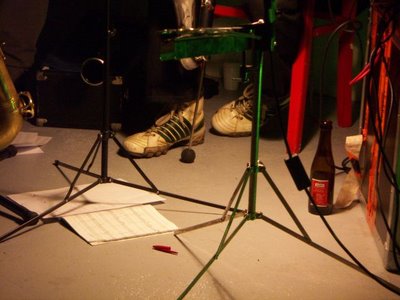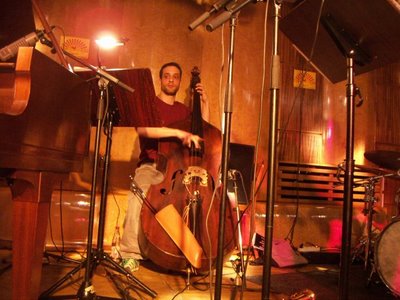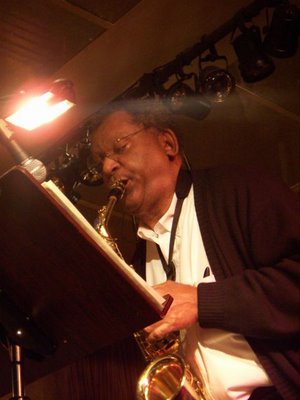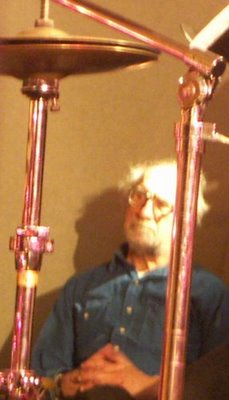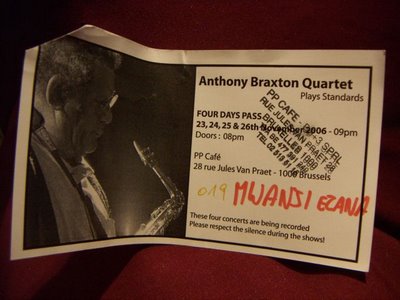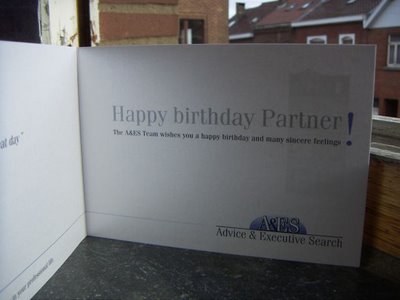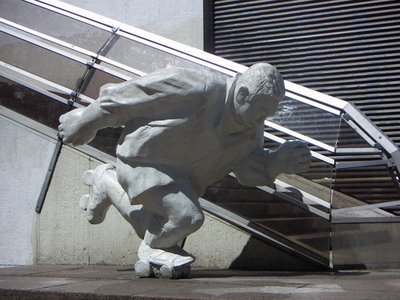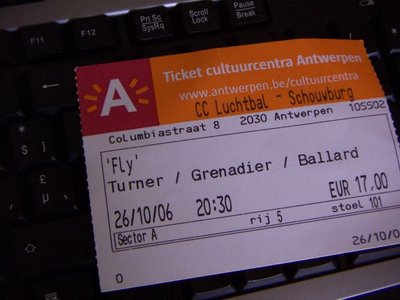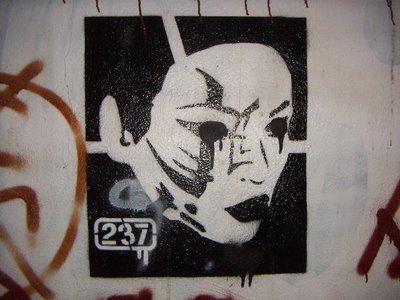
like taking the bus
Things start well: the Sunday morning train to Charleroi is 20 minutes late, so we miss the bus to the airport and have to take a taxi - the first of many budget overruns. We make it to Málaga eventually. It's the first time I've set foot in Spain since 3.5 months spent studying Spanish in Salamanca in early 2000. By the end of that course, I was fluent, but I haven't spoken the language since. My rusty Spanish is manipulated bluntly, unsanitarily bludgeoning those unfortunate enough to be subjected to it. By the end of the week, words and a modicum of coherence have started to come back, but I realise that I am only capable of handling one foreign language at once: Dutch and Spanish tend to either blur or cancel each other out, even when I'm back home.
Two passengers on the bus to the city hold mobile phones a few centimetres from their ears. The phones tinnily blast music, which the pair, sitting next to each other, shout over when they need to communicate. When one gets off the bus, the other puts the phone away and takes out an MP3 player, with headphones. I am reminded of this incident by the Alhambra's audio guide, which you hold up to your ear. In Ronda, a hi-tech group of Germans solves the perennial guided tour problems: the guide speaks quietly into a microphone, which routes her voice to the ear piece worn by each member of the group.

We don't stay in Málaga, preferring instead to bus directly to Granada. The people there are easily the trendiest of the four cities we visit. Young Spaniards are big fans of mullet variations and mullet/faux-hawk combinations. It's very odd. Another popular fashion item: felt-covered scooter helmets that look like riding helmets.

at the Alhambra
The Alhambra is Granada's big attraction, of course. We spend some of our time there listening to Lorena McKennit soundchecking in the Palacio Carlos V's circular patio for a concert that evening. I assume that after the soundcheck, the instruments were promptly put into an oven pre-heated to 190 degrees celsius.

oven-ready piano and harp
The Sacromonte rises opposite the Alhambra. Houses are carved directly out of the rocky hillside and their interiors are rounded, like Electric Ladyland studios, only white.
The Monasterio San Jerónimo has a stunning church. The Monasterio Cortujo's is a notch lower, despite the dove and eight cherubic faces that peer down upon us from the dome's heavenly heights. The refectory walls are adorned with unappetising scenes of persecution and oppression. One particularly absurd trilogy shows self-inflicted wounds, while the monks gaze skywards, innocently. Photos aren't allowed, but...

heartache and migraine
For more earthly needs, Europa II on the Calle de los Reyes Católicos has good tapas + beer (caña) for 1.50 euro. Lax, in a different part of town, isn't in the Lonely Planet guide and is totally Spanish. Om Kalsoum, just around the corner, is in the guide, totally touristy, but actually has better tapas. Los Italianos, at the beginning of the Vía Gran Colon has delicous ice cream. A 2 euro
tarrina is enough for one person who wants ice cream and another who "doesn't want any." We savour the
nata and
trufo. Further down the street, there's La Cordobesa, a cheap place for last-minute sandals and ridiculous shoes.

In Málaga, Casa Maria (I think), on the main shopping street, rivals Los Italianos. Their proclaimed specialties are the nut-based truffon and the coffee-and-ice-cream Blanco y Negro (traditionally, nougat ice cream is chosen), but the cinnamon-topped
batidos (milkshakes) are equally delicious.

the alhambra's palacio carlos V
We occasionally deviate from the Lonely Planet gospel. IVN being a doctor, I suggest we enter the open gates of the Hospital San Juan de Dios, on the
calle of the same name. Instead of antiseptic white corridors, there are frescos on the patio walls, richly engraved wooden panels on the ceilings and a complex staircase. It's amazing. University buildings are also good spots for short,
impromptu visits.

feeling better already
Further down the street, there's a café that serves delicious orange juice squeezed before your very eyes and above-average coffee (or so IVN says, I don't drink coffee). For a few minutes, as the aged second-in-command silently goes about his business, we imagine him to be mute - a kind of waitering
Bernardo - but this turns out not to be the case.
We have some time to kill before taking the bus to Córdoba and go to a nearby Aldi. At the counter, a couple of old ladies and their grandson/nephew wait until it's their turn to start putting their numerous purchases on the conveyor belt. The gs/n does all the work. The payment process takes a long time, but the cashier is unhurried. When our turn finally comes, despite the fact we'd long put our few supplies on the belt, she becomes tense and snappy, suddenly remembering a hundred places she'd rather be.

now that's what I call graphical notation
The Lonely Planet's map of Córdoba is maddening. One of the city's two bridges is missing, which leads to lost wanderings and arguments. Granted, the modern Puente Milaflores is less historically significant that the old Roman bridge, but it is kind of stylish and certainly does not deserve erasure from the map. We manage to find the Hotel San Augustin, an idiosyncraticly decorated little place. We suspect that the
Completo sign that goes up every night reflects a desire not to be disturbed rather than a hotel industry ideal. The old
mama holds the key to the front door and must be called every time it needs to be opened. She walks by us several times with barely a glance, let alone a word. Maybe she doesn't talk to foreigners.
We search for the Jazz Café for an incredibly long time. The map is only partially to blame this time, as darkness and fatigue play a part. A passable electric violin/guitar/bass/drums jam session is taking place, before a chatty, enthusiastic crowd. A terrible singer sits in on a bossa nova tune and issues a hand signal that no one understands. Muted bandstand hilarity ensues. There's no food, the drinks menu is limited and the caïpirinha poor. A tapas bar down the street is very good, though.
The city's old centre revolves around the Mezquita and is more isolated, old-timey and run-down than Granada's. In the streets, open front doors offer glimpses into Córdoba's famous patios. They range from cosy, plant-filled outside living rooms to icy marble expanses that are more impressive than inviting. The Mezquita's juxtapositions, imbrications and occasional mixtures of Islamic and Catholic elements create bizarre displacements in time and space. Side by side, the latter seem over-wrought, chaotic and violent, obsessed with pain and death, while the former are regular, calm, abstract and intricate.

hey, it's modern art!
Ronda is a touristy mountain town once celebrated by Hemingway: it's the birthplace of the modern corrida. Unfortunately, we didn't visit the Museo Taurino, but we did tour the Museo Bandolero, which is dedicated to famous Andalucían bandits, the last of whom was shot down in 1934. It's not exactly worth the 3 euro entrance fee, but the biographies (most, but not all, are available in English and French as well as Spanish) are pretty entertaining. They tell of country boys who might have killed a few people, abducted a rich person or two ("the easiest way to make a lot of money"), sported a colourful nickname and run from the law. Most didn't make it out of their twenties. Málaga's Museo Picasso and Centro de Arte Contemporeaño are other necessary correctives. Both are bite-sized and undidactic, the latter is free, very contemporary and quite fun. These three museums were nice diversions from the bombardment of religious art in the cathedrals and monasteries.

peace in the household, at last, through some more modern art
The place you really want to hit in Ronda is the Bodeguita Los Caracoles on the Calle Salvador Carrasco. It's a cramped neighbourhood joint where regulars shout their orders over the ambient din, from across the room. Barman António rarely stops moving, which renders his sizeable pot-belly puzzling. The food is good and cheap, as is the sweet wine, which is served from huge barrels.
The cognac-coloured wine is (apparently) a regional specialty and the barrel-serving something of a tradition. The Antigua Casa de Guarda on Málaga's Alameda Principal is relatively expensive (roughly 2.50 a glass, 10 for a bottle), but has a large selection and an austere charm: your tab is written in chalk directly on a wood counter slick with use; the only food available is the seafood in a neon-lit cooler - the wine waiters claim not to know its price. Those with delicate palates will want to avoid the drier wines (Seco, Oloroso, Fino). Dulce overdoes the sugar. My favourites are the sublime Pajarete and the thick Pedro Ximénez. There's a large checkered-floor bar on Calle Menedez Nuñez that has terrible neon lighting, but a good selection, as well as our trip's only decent sangria. Contrary to the impression this report might give, I lost weight during this holiday.

hotel luxury
What's cooler than being cool? The (ice cold) Mediterranean!* On our last morning in Málaga, we head to the beach and actually manage to completely immerse ourselves in the hypothermia-inducing water. I get out when I start losing feeling in my legs.
* I filled those long bus journeys with
Idlewild and
Game Theory.






